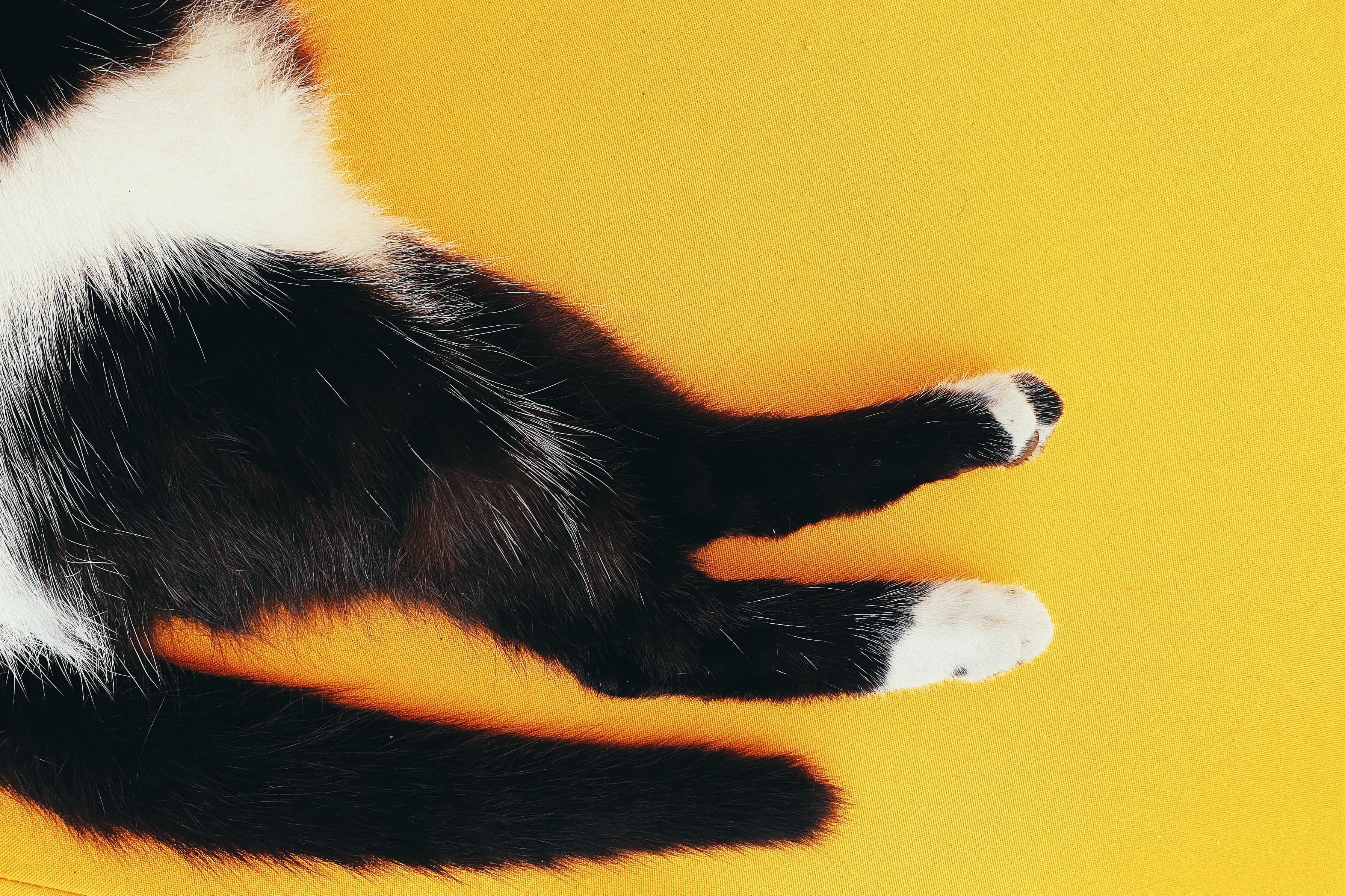Cats talk to each other in many different ways, including through body language, sounds, and even smells that humans can't notice. Despite all the talking, cats are still a mystery because they seem so independent.
But it's not hard to figure out several basic things about a cat's mood by looking at how her tail is positioned. Once you know what your cat is thinking, you can really improve your connection with her. This article will examine what the cat tail signals tell you and how you may respond to them.
BASIC CAT'S TAIL SIGNS AND HOW TO RESPOND TO EVERY TAIL POSITION
1. Straight-Up Tail
When your cat comes up to you or to another person, she may occasionally do so with her tail up high. A confident and contented cat is usually accompanied by an upright tail. When greeting new people, a happy and pleasant cat will stand with its tail up.
We can read a cat's straight-up tail as a sign that she is confident, cheerful, and approachable. You may choose to provide her with treats, hugs, and playtime.
2. Curled At The Top Tail
A comfortable cat typically has a tail that curls in a soft U shape. The higher the tail, the more curious she is. Her relaxed, friendly posture, with her tail coiled and flipped forward over her back, indicates that she is pleased to see you.
Sometimes we can read curled at the top tail as an indication of a cat's thinking about its next move. Cats also welcome people they know in this manner. You might respond by extending a hand for them to sniff and pet.
3. Straight Down Tail
Many ways a cat puts its tail straight down show that it is submissive or defensive, which can lead to acts of aggression. If she doesn't recognize you, be careful when approaching her or petting her.
We can also read a straight down the tail as a sign of feeling defensive, which could make her act aggressively. Your cat might be scared or nervous because of something.
You may try to fix whatever is making her upset.
4. Curved Beneath The Body
When a cat's tail curls under or beneath the body, it means that the animal is scared, nervous, or surrendering. When a cat is scared, it will typically lie with its ears flattened out and its tail stuffed under its body. When you notice this, avoid interacting with the cat and make sure its environment doesn't have anything that could make it upset.
If your cat sits in the same position with its tail tightly curled around its body for another day, it could mean she is hurt or sick. Her head is often tucked in as well. You should take your cat to the vet to make sure it's not in pain or sick.
5. Puffed Tail
When a cat's tail is stiff and puffed, it may be a signal that she feels threatened and is acting aggressively to defend herself. The fur on their backs also stands on end, giving the impression that they are bigger and taller. Your cat may react violently if you attempt to approach her because she views you as a danger or threat, so you need to be careful and give her space.
6. Whipping Back And Forth
Cats' tails often wag and whip back and forth, quickly showing both fear and anger. If your cat's tail is gently moving from side to side, it could mean that he or she is interested, eager, and paying attention to something.
You might see your cat's tail in this position just before it jumps up on the feather toy you're holding out or something outside the house. They may be getting ready to attack!
Your cat will benefit from engaging in predatory behaviors such as pouncing and stalking, so allow them to continue doing whatever activity is capturing their attention. This will provide them with enrichment.
7. Twitching Tail
When cats are playing, hunting, or feeling somewhat irritated or frustrated, the tip of their tails will twitch in a certain pattern. This behavior can also be seen in other situations. In this instance, you should read the situation and search for other indicators of their mood. If they are not engaged in a game or in the chasing of anything, therefore the twitching tail motion most likely indicates that they are frustrated.
8. Wrapping Tail
Cats may greet humans and other cats by wrapping their tails around their bodies or by intertwining their tails. The act of wrapping one's tail around another shows a desire to form bonds with you, with the other person, or with other animals. You may touch the cat and cuddle.
9. Quivers Tail
When your cat is very happy to see you, someone, or another cat, its tail may quiver. When a cat backs up against a side wall with his tail straight up and quivers, he may be trying to mark his territory with urine.
10. Thrashing Tail
When your cat is frustrated, agitated, or angry, you'll see them thrashing its tail or banging it on the floor, which means that your cat is experiencing some sort of discomfort.
This is a behavior that makes things further away. If you are touching your cat and it starts to thrash its tail, it wants to tell you to stop. If you can't understand, the thrashing tail could be a sign that the cat is about to hiss, swat, growl, or bite.
Summary
The cat's tail is perhaps the most sensitive feature of its body language, yet you should also observe other movements to better understand your cat's thoughts and emotions.
Having an excellent understanding of your cat's likes, dislikes, and anxieties can allow you to give her a happier, healthier, and more fulfilling life. Your relationship with your cat will benefit greatly from your efforts to read her Cat-Tail Signals for you to give a good response.



